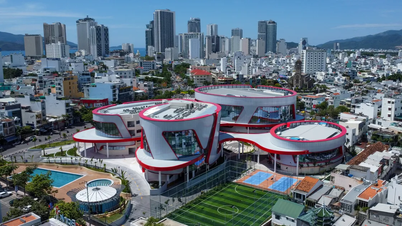Having identified the weaknesses of the shrimp industry in 2023, entering the first quarter of 2024, the Vietnamese shrimp industry has had a clear change.
This is evidenced by the "heating up" of shrimp consumption in major markets in the first 3 months of this year.
Positive changes from large markets
In the first 3 months of this year, the US and Chinese markets have had many remarkable changes in Vietnam's shrimp consumption.
According to Vietnam Customs, Vietnam's shrimp export turnover in the first 3 months of 2024 is estimated to reach more than 620 million USD, an increase of 24% over the same period in 2023; of which, shrimp export turnover to the US market is estimated to increase by 26%, and to the Chinese market is estimated to increase by more than 140%.
Ms. Kim Thu, shrimp market expert, Vietnam Association of Seafood Exporters and Producers, shared that the demand for Vietnamese shrimp imports in the Chinese market in the first quarter of 2024 is still quite high. Typically, in the first month of this year, China increased shrimp imports sharply to meet the demand for Lunar New Year.
Besides, China reduced imports from Ecuador - China's largest shrimp supplier, so this market increased shrimp imports from Vietnam.
In the Chinese market, Vietnamese shrimp must compete on price with rival suppliers. However, many Chinese buyers consider Vietnamese shrimp to be of higher quality than Ecuadorian and Indian shrimp, so they accept higher prices.
In the US market, shrimp industry experts predict that US fresh and frozen seafood sales will stabilize in 2024, after facing many difficulties in 2023 due to inflation and people tightening their spending.
Compared to some major shrimp suppliers in the US such as India, Ecuador, and China, Vietnam is considered to have more prospects, especially when the Vietnam - US diplomatic relationship is good, opening up many opportunities for Vietnamese goods to enter the US.
The US also has a policy of increasing purchases from other countries, reducing over-reliance on Chinese goods.
Besides large markets, high-demand markets such as Japan are also expected to recover earlier than other large markets such as the US and Europe in 2024.
Japanese consumers require products to be delicious, nutritious, beautiful, and meticulously processed, suitable for Vietnam's processing level and capacity.
In addition, the Japanese market is geographically closer than the US and Europe, and payment methods are also safer. According to a representative of the Vietnam Association of Seafood Exporters and Producers, value-added processed shrimp products account for 40-45% of the total annual shrimp export value.
The general processing level of Vietnamese shrimp enterprises is at a high level in the world and this is a competitive advantage of Vietnamese shrimp in the Japanese market. Vietnamese shrimp leads the market share of high-end shrimp in Japan.
Focus on raw materials and domestic market
Although the Vietnamese shrimp industry is on the rise and growing again, industry experts advise against being complacent, because the competitiveness of other countries is very high.
Mr. Ho Quoc Luc, former Chairman of the Vietnam Association of Seafood Exporters and Producers, Chairman of the Board of Directors of Sao Ta Food Joint Stock Company, shared at the Boston International Seafood Fair (USA), world customers assessed Vietnamese shrimp as having very good quality, but the price was too high. This is a repetition of the previous competitive path of Indonesian shrimp.
However, currently, Indonesian shrimp prices have become softer, to be able to compete with shrimp from India and Ecuador. Therefore, the problem is that the Vietnamese shrimp industry must have solutions to improve processing levels, diversify products to attract consumers and maintain the high-end market segment.
In fact, it is worth noting that all of these products are made on the basis of using high-priced raw commercial shrimp. "A moderately high price is fine, but a high price of 1-2 USD/kg is really troublesome," commented Mr. Ho Quoc Luc.
In order for the Vietnamese shrimp industry to compete with other countries, domestic media needs to more strongly spread information about cheap shrimp in other countries so that Vietnamese shrimp farmers are more aware of calculating their farming seasons to minimize risks; more strongly spread information so that those in charge are more aware of developing long-term strategies and, most importantly, short-term strategies; at least strengthen solutions to control breeding stock at this time, Mr. Ho Quoc Luc suggested.
Along with focusing on raw shrimp sources for processing and exporting at low prices, shrimp businesses are also gradually taking advantage of all market advantages, including the domestic market.
According to Mr. Le Van Quang, Chairman of the Board of Directors of Minh Phu Seafood Corporation, currently Minh Phu's shrimp market share in the domestic market is less than 1% of its revenue structure.
This is because shrimp of export quality standards has a price 20-50% higher than normal, so its competitiveness is not high.
However, recently, Minh Phu has researched and raised shrimp using MPBiO biotechnology, so the quality is higher and the price is cheaper.
Therefore, in the coming time, Minh Phu aims to increase its domestic market share by 5-10% compared to the current level with retailers and distributors such as Bach Hoa Xanh.
Minh Phu will bring shrimp lines that meet export standards to Japan, the US and Europe, raised in an environment without antibiotics or chemicals, distributed in the Bach Hoa Xanh system to provide domestic consumers with high-quality shrimp. This is an opportunity for Minh Phu to bring international-standard shrimp to the Vietnamese dining table.
According to VNA/Vietnam+
Source



































































































Comment (0)